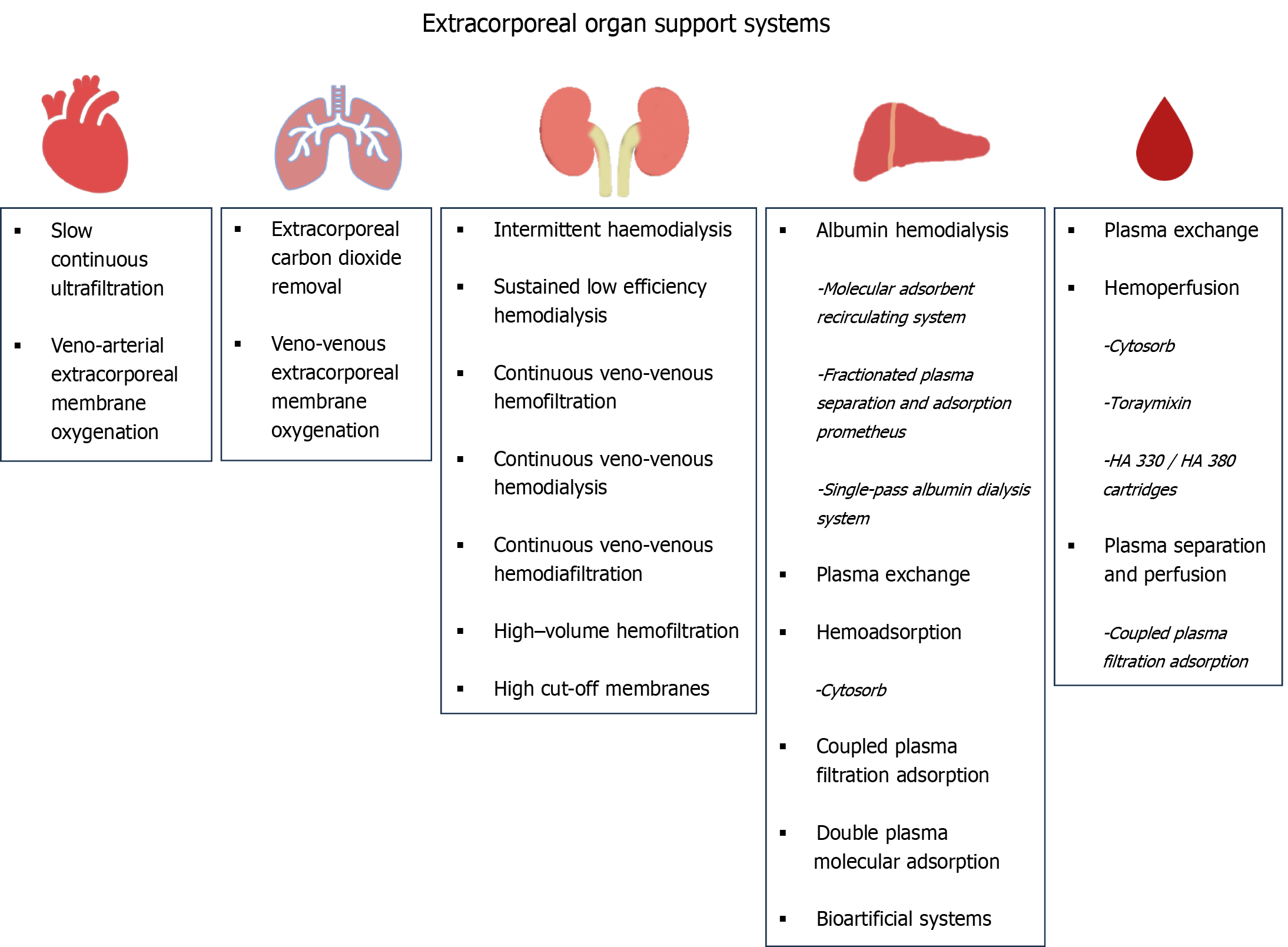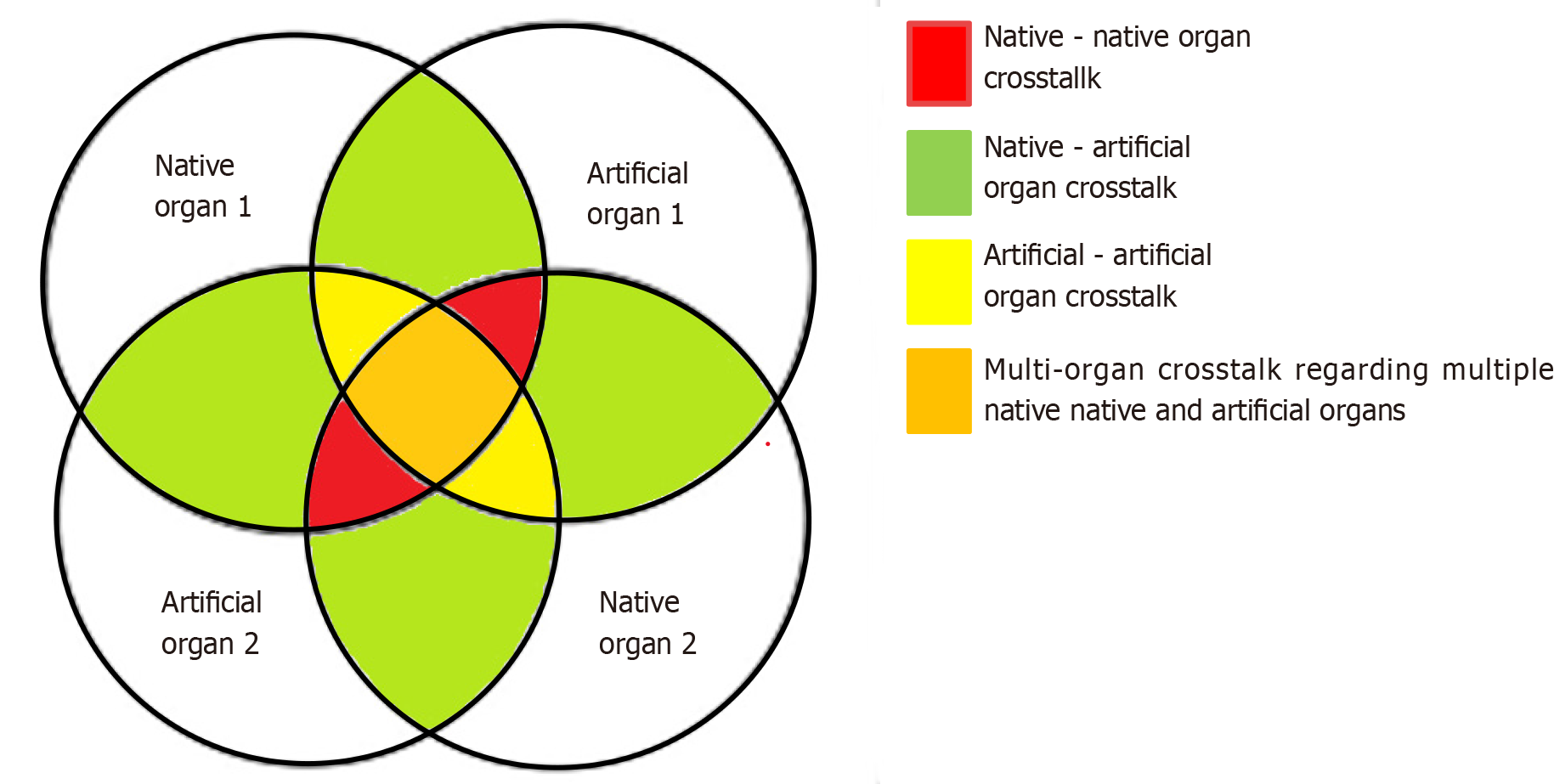Copyright
©The Author(s) 2024.
World J Crit Care Med. Jun 9, 2024; 13(2): 92458
Published online Jun 9, 2024. doi: 10.5492/wjccm.v13.i2.92458
Published online Jun 9, 2024. doi: 10.5492/wjccm.v13.i2.92458
Figure 1 Schematic representation of the most popular extracorporeal therapy methods.
Each organ can be supported by certain modalities when organ failure occurs.
Figure 2 Liver replacement modalities and their basic features.
Each modality removes certain molecules, according to its’ principle of function.
Figure 3 Venn diagram presentation of combinations between native and artificial organ crosstalk.
Possible interactions that occur, or lead to multiple organ failure.
- Citation: Papamichalis P, Oikonomou KG, Xanthoudaki M, Valsamaki A, Skoura AL, Papathanasiou SK, Chovas A. Extracorporeal organ support for critically ill patients: Overcoming the past, achieving the maximum at present, and redefining the future. World J Crit Care Med 2024; 13(2): 92458
- URL: https://www.wjgnet.com/2220-3141/full/v13/i2/92458.htm
- DOI: https://dx.doi.org/10.5492/wjccm.v13.i2.92458











